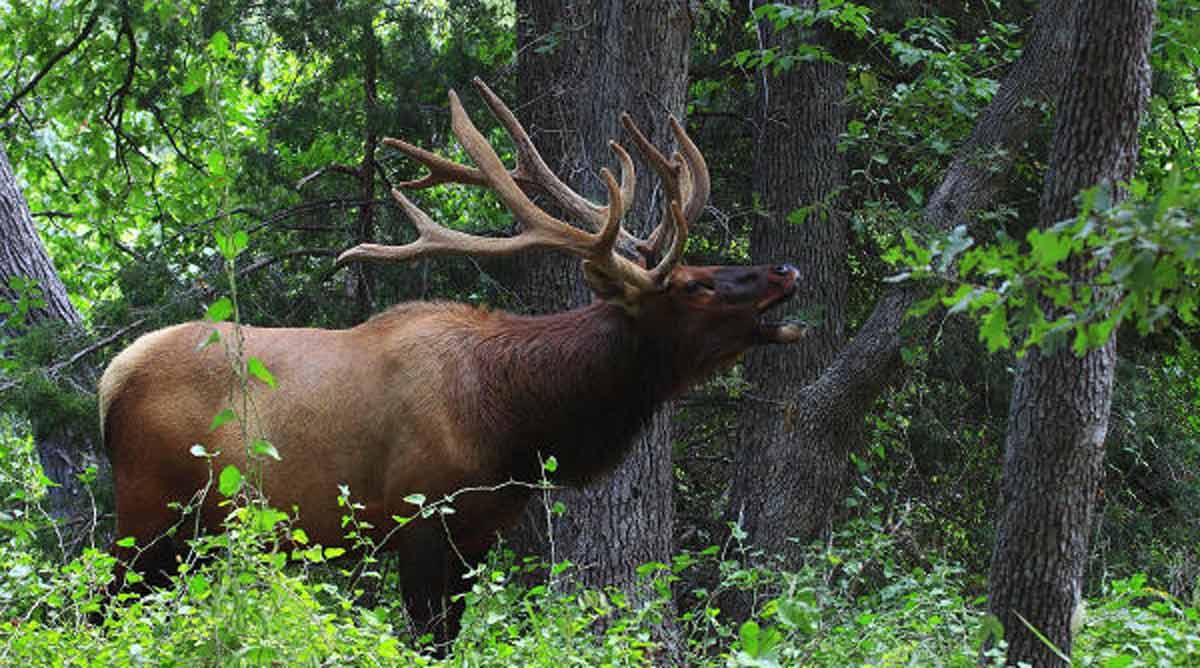Below is an article written by Craig Springer of the U.S. Fish and Wildlife Service
To a mountain range, time ticks by unnoticed. The Wichita Mountains of southwest Oklahoma stand steadfast, rising up like an island in a sea of prairie. These are old mountains—older than the mind can comprehend. Five-hundred million years, so say geologists. Wichita Mountains Wildlife Refuge conserves a parcel of the mountains, some 59,000 acres, and all its wild residents.
Granite, quartzite and sandstone lie atop of the craggy mountains, worn smooth by wind and rain and time. Oak and cedar stud the mountainsides and the ravines etched into the slopes. The land plays out in a soft immensity that belies the bouldered soil. Native sod is a stubborn thing, but this dirt was spared the plow because the earth’s basement is too close to the surface. You’ll know it walking overland. It’s rough going.
That native soil abounds in native plants than reproduce unfettered, save for drought. That fact becomes self-evident when the spring rains awaken a profusion of flora. Come April, herds of gravid cow elk will drop their calves to be met with a medley of wild flowers that color the land like glass in a church window.
Elk belong here—as much as white-tailed deer and bison and a litany of songbirds that arrive from the south to nest and leave when the earth wobbles back toward the autumn season. Autumn yields to winter and a season of another kind starts. A robust population of elk allows hunters an once-in-a-lifetime chance to hunt this largest of big game.
Wildlife biologists keep tabs on the elk herds and the refuge land they inhabit. Elk numbers naturally fluctuate; this is known because at least every two years U.S. Fish and Wildlife Service biologists fly in helicopters on established routes over the refuge to count the herds. Flying the same routes at the same time over a span of years reveals the number of animals on the ground, and how many can be harvested by hunters to maintain a healthy herd.
This last elk season in December 2017 and January 2018, 178 hunters harvested 137 elk from a total population numbering near 1,400 animals. Knowing bull-to-cow ratios informs how many licenses are available each season. Hunting licenses are let by lottery, administered by the Oklahoma Department of Wildlife Conservation.
The success rate is high for hunters; over the long term, approximately 67 percent of hunters take an elk, well above typical harvest rates most anywhere.
Hunting is an important habitat management tool. And hunters take home the ultimate in natural, nutritious, free-range organic meat.
Wherever the trend in the number of elk goes on the refuge in the future, one must remember that it effectively started at zero. No elk. Unregulated commercial and subsistence harvest eliminated the animal from the Wichita Mountains and the present-day refuge by 1875. In 1901, President McKinley declared much of the mountains the “Wichita Forest Reserve.”
In 1905, the spectacled conservationist-in-chief, President Teddy Roosevelt, authored the book, Outdoor Pastimes of an American Hunter and he authored a decree that set the mountains on a different course: “…it appears desirable that the entire Wichita Forest Reserve be declared a Game Preserve,” Roosevelt penned in Presidential Proclamation 563. He further stated that the lands “…shall be recognized as a breeding place therefor, and that the hunting, trapping, killing or capturing of game animals and birds upon the lands of the United States within the limits of said area is unlawful, except under such regulations as may be prescribed from time to time…”
Today, science guides modern-day regulations for harvest. But it took quite some time to get there. Elk were reintroduced to the refuge in 1908—a single bull from a zoo in Wichita, Kansas. The remaining seed stock of 16 animals, cows and bulls, came from Jackson, Wyoming in 1911 and 1912. But 1969 marked the year that the herd could confidently withstand hunter harvest.
The fact that elk can be harvested where slightly more than a century ago there were none stands as a testament to scientific wildlife management. Though time ticks on unnoticed by a mountain range, it is a place not forgotten. Its splendor and its wild residents will consume your senses and remind you that you are alive.
(Photo source: U.S. Fish and Wildlife Service)
